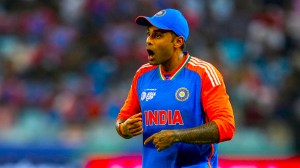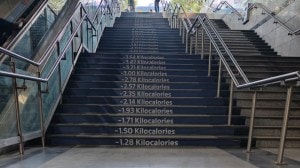MELTDOWN 2008
In the beginning was the word, and the word was ‘subprime’. By the time there were more holes in Wall Street than bricks...

In the beginning was the word, and the word was ‘subprime’. By the time there were more holes in Wall Street than bricks, a whole dialect of crisis was being spoken and heard on streets across the world. The 2008 financial crisis brought economics to drawing rooms and paan-shops. If you knew the right words, the rest was easy. Those who would slip on a Lorenz curve were seen eager to macro-manage the world economy. In 2008, we learnt to speak on economy, but not always understanding everything. Below are the words that people bandied about as the fear of a moneyless future rolled in a flat world.
AIG: American Insurance Group. A model of what can go wrong with financial giants, and what can keep on going wrong even when there is a bailout, government oversight and public glare. AIG executives escaped to a pricey California beach resort to unwind just days after the insurance giant was rescued by an unprecedented $85-billion US government loan.
Bailout: The word of the year. Launched revisionist fervours, almost brought back the spectre of Marx. A brick to be bunged at capitalism. Now, after the $700-bn stimulus in the US failing to lift the spirits, the scheme seems to need a bailout itself.
Banks: Went cheap this year. The following joke sums up the situation in the US: I went to buy a toaster and it came with a bank.
Chapter 11: The chapter at which the book of bankruptcy opens. Of late, lots of CEOs have been reading it closely. Chapter 11 is a chapter of the US bankruptcy code that gives a company an opportunity to reorganise and emerge from bankruptcy.
CDO: Collateralised debt obligation is at the heart of the current financial darkness. A complex instrument based on pools of debt that have been grouped together and re-packaged into new investments. It is allocated risk ratings offering different rates of return depending on the risk of default of the underlying assets. Defaults occuring within the CDO tranches were a major trigger for the credit crisis.
CDS: Credit default swap. Another dreaded financial instrument — essentially a form of financial insurance. The buyer of the swap makes periodic payments to the seller in return for protection in the event of a default on a loan. Banks and other institutions have used credit default swaps to cover the risk of default in mortgage and other debt securities they hold. Many credit default swaps have sunk in value as the mortgage-backed securities they support have imploded.
De-coupling, the theory of: The world is not flat, that’s what it said. It’s been proved wrong. China, India and other large emerging markets were considered “decoupled”, immune to the shocks from the economic superpowers. The theory is failing as crumbling western stock markets have impacted emerging economies.
Fundamentals: When you are more in the ground than in the sky, your fundamentals are strong. When you are leveraged, your fundamentals are weak. It wasn’t as big a virtue just two-three years ago.
Bush, George: For once, he couldn’t be blamed for ignorance; no one else knew anything about the financial crisis either.
Greenspan, Alan: The man who could see the future, but did not. Accused of nurturing the crisis while he was chairman of the US Federal Reserve by promoting derivatives. Admitted that he was wrong.
Iceland: A country that offered itself to demonstrate the meltdown. Its economy was so much leveraged that its finances, true to its name, were mere congealed snow, ready to melt down.
Kashkari, Neel: Paulson’s Indian. Former Goldman Sachs hand, brought in as the pointman to oversee the $700-billion financial bailout as the interim head of Paulson’s Office of Financial Stability. Since got lost in a maze of demands by hundreds of companies.
Keynes, John Maynard: The guy who said in the long run we are all dead. Well, he himself is not. In the wake of the financial meltdown, so-called experts are going back to the economist of macro-management. Today there are many buyers for his idea that the state can directly stimulate demand in a stagnating economy, by borrowing money to spend on public projects.
Leverage: You are leveraged when you are trying to make profits on borrowed money. A bank borrows money in the hope of investing it for good returns and repaying it after keeping those returns. If investment falls, returns turn negative, the bank is unable to repay the debt.
LIBOR: The London Interbank Offered Rate or the banking trust gauge is a daily reference rate based on the interest rates at which banks borrow unsecured funds from other banks in the London financial market. When mutual distrust hits interbank lending, Libor shoots up. It did in 2008.
Mark-to-market: An accounting standard also known as fair value accounting which requires companies to value the assets on their balance sheets based on the latest market indicators of the price that those assets could be sold for immediately. Under this rule, declining housing prices don’t just reduce the value of defaulting mortgages. They reduce the value of all mortgages and all mortgage-related securities. People says big losses happened because of this rule.
NINJA loans: Could as well be called kamikazi loans. Loans provided to borrowers with no income, no job, no assets, so that the only security was the value of the homes. Such loans were heavily marketed to subprime borrowers in the US.
Ponzi scheme: A Ponzi scheme is a fraudulent investment operation that pays returns to investors out of the money paid by subsequent investors rather than from profit. Some people think what was going on in the US financial sector before the financial crisis was really one big Ponzi scheme.
Paulson, Henry: Earlier the CEO of investment bank Goldman Sachs, now the US treasury secretary. Probably the only man in the US who knows the full extent of the financial trouble but very little by way of how to contain it.
Quants: Short for quantitative analysts. Ivy league mathematicians on Wall Street payrolls whose main job is to obfuscate value and create cryptic financial products that could as well be junk.
Recession: When the GDP of a country falls for two consecutive quarters, it is said to be in recession. That’s for the clergy. For the layman, its an emotive term suggesting general economic breakdown and things like job losses.
Reddy, Y V: Former RBI chairman and the post-apocalypse hero. NYT lauded him for saving Indian financial system from going the American way. Many at home still not convinced of the man’s worth.
Subbarao, Duvvuri: The man in Reddy’s shoes. Seems he is still trying to size up. NYT is watching him.
Short Selling: A general indication that markets are going from bad to worse. Short-sellers bet that the price of the share will fall. They sell shares that they borrow at the time of the sale with an intent of later purchasing them at a lower price.
TARP: Troubled assets rescue programme. The apolitical name for the US government’s controversial $700-bn bail-out package for the financial industry which allows the US Treasury to buy toxic mortgage debts from banks.
The stock trader: The fraught man on the floor has become a measure of the financial scare, with the swings in Dow Jones finding expression on his face. There are two kinds of iconic images; the trader watching a terminal with a puzzled or frightened expression and the trader holding his head in despair.
CRR has come down from 9 per cent to 5.50 per cent since October 2008.
October 6: The Reserve Bank of India (RBI) first slashed the cash reserve ratio (CRR) — the portion of bank deposits to be kept with the RBI — by 0.50 percentage point to 8.50 per cent as global financial turmoil ballooned and liquidity position worsened.
October 10: Even as global markets fell 10 pc amidst mounting fears that efforts to break the logjam in credit markets had failed, the RBI intervened to ease the liquidity problem by cutting the CRR by one per cent to 7.50 per cent.
OCTOBER 15: The RBI moved aggressively to provide liquidity to the fund-starved banking system and reduced the CRR by 100 basis points to 6.50 pc
NOVEMBER 1: To provide more liquidity to banks, the RBI slashed CRR by 100 bps from 6.5 per cent to 5.5 per cent. The 350 bps cut in CRR since October 6 has released Rs 1,40,000 crore to the banking system.
REPO RATE has come down from 9% to 6.50% since October 2008.
OCTOBER 20: The RBI first slashed the repo rate by 100 bps to 8 pc, a move that will help lower interest rates and spur consumption to keep the economy ticking. This was the first repo rate cut since 2004.
November 1: Making funds cheaper for banks and coming after a series of rate cuts by nations across the world, the RBI reduced the repo rate by 50 basis points to 7.5 per cent.
December 6: Cut the repo rate by 100 bps to 6.5 pc as part of a mega economic stimulus package.
REVERSE REPO RATE has fallen from 6% to 5%
DECEMBER 6: The reverse repo rate was cut by 100 basis points to 5 pc for the first time this year. A lowering of this rate made it less lucrative for banks to park funds with the RBI.
January 1, 2008: 20,325.27 points
The Sensex started on an optimistic note with no negative factors.
January 10, 2008: 21,206.77 points.
It touched the 2008 peak on heavy buying by foreign funds and local investors.
January 21: 17,605.35 points. Crashed by 1,408 points (7.41%) — its biggest single-day point fall — on a closing basis as fears of US recession roiled global markets.
January 25: 18,361.66 points. The index posted its biggest ever gain of 1,140 points on global cues such as robust US job data.
March 3: 16,677.88 points. Investors reacted nervously to a steep decline on Wall Street after disappointing economic and corporate news.
March 17: 14,809.49 points. Lost 951 points as the fire sale of Bear Stearns and the US Fed’s rate cut hit sentiment.
March 31: 15,644.44 points. The index — which ended the worst quarter in 15 years with a 23 pc fall — plunged 727 points
July 23: 14,942.28 points. The Sensex registered its biggest single day rise of 838 points in nearly four months following the government’s victory in confidence motion on the Indo-US nuclear deal.
September 19: 14,042.32 points. Gained 727 points, as India joined a strong global recovery in markets as a global ban on short selling calmed nerves
October 10: 10,527.85 points. Ended down 800.51 amidst fears that efforts to break the logjam in credit markets failed.
OCTOBER 24: 8,701.07 points. Joining a global stock rout, the Sensex tanked by 1,071 points.
October 27: 7,697.39. Hit the yearly low. Sebi stepped in after the Sensex — which plunged over 1,000 points — staged a dramatic 800-point recovery.
DECEMBER 30: 9716.16 points. Advanced 182.64 points on hopes that the RBI would cut key rates again to bring down interest rates and kick off growth. Down 52.19 per cent since Jan 1, 2008.



- 01
- 02
- 03
- 04
- 05




























